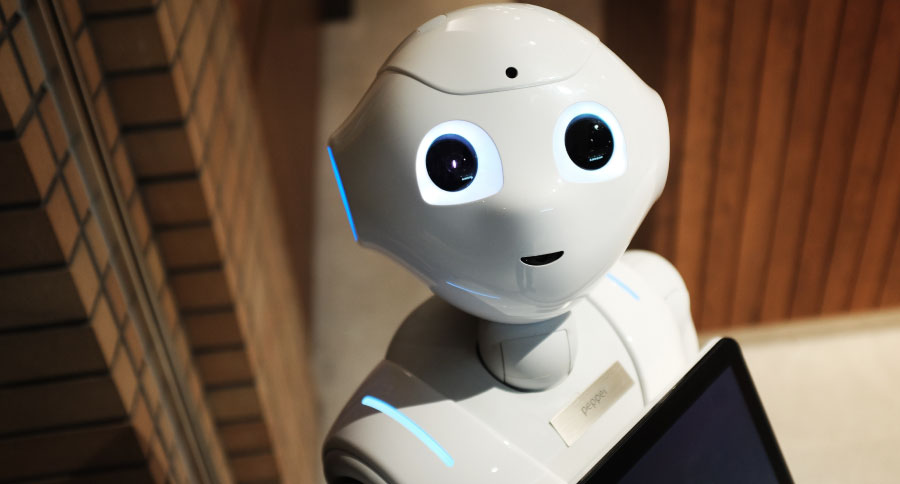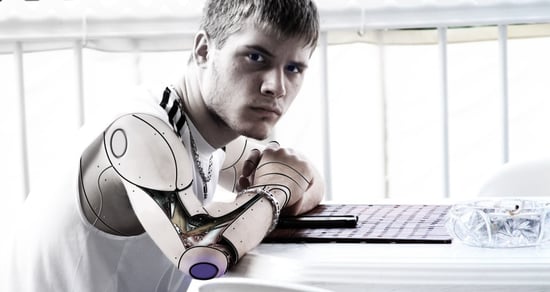
Using robots and artificial intelligence in our homes was once thought of as science fiction. Yet, with self-driving cars and additional enhancements in smart home technology on the horizon, home robots may soon become ordinary.
Even though the use of home robots first emerged in the 1990s, we don’t always think of some of our common gadgets as artificial intelligence or robots. Cleaning, entertainment, and home security and surveillance are the top categories for home robot use, according to Emerj.
Main Types of Home Robots
Cleaning appliances like the Roomba vacuum and the Landroid robotic lawn mower free us from more mundane or repetitive household chores. Entertainment robots have started to move into the home, with robotic pets and domestic/social robots that also serve as gaming consoles. Automated home security options like Ring Doorbell and Nest Cam can integrate with smart home technology hubs, giving us a greater sense of control.
Acceleration of Robotics (COVID-19)
Home use of robotics and artificial intelligence is growing rapidly as adjustments to our daily routines are being made due to COVID-19. Physical distancing and shelter in place guidelines have increased the use of robots and drones to make deliveries and walk pets. Changes in requirements for retail stores and restaurants may also speed up the use of robots and artificial intelligence to help reduce the amount of in-person contact.
Social robots that meet social interaction needs during quarantines or times of isolation are rising in prominence due to COVID-19. The technology behind social robots includes being able to recognize human facial expressions and emotions and respond appropriately. Social robots can make jokes, engage in simple conversations, and even dance, according to Interesting Engineering.
Although social robots may not be able to fully replicate human friendships, these robotic advancements have recently benefited seniors. As nursing homes have restricted visitors to slow the spread of the coronavirus, robots are stepping in to fill social needs. Robots designed to provide home entertainment, such as Cozmo, can also fill social interaction needs and function as an interactive gaming console.
Essential businesses and industries like healthcare are incorporating robots to help serve customers, deliver orders, disinfect hospital rooms, and interact with patients while maintaining appropriate distances. As restrictions around gatherings and social distancing continue, robots may be relied on more to accomplish tasks humans aren’t able to perform safely, while also filling in the gaps left by staffing shortages.
Beyond filling these gaps, robots and artificial intelligence are being used to alleviate indoor and outdoor chores, cook meals, fight crime, dispense medication, and teach and entertain children.
Potential Replacement of Human Tasks

Current and future developments in artificial intelligence technologies may eventually substitute for humans in more professions. Fitness, health, and financial advisers could soon be replaced with robots or AI-related technology, according to BBC News. Supplementing or enhancing the tasks humans currently perform is another developing area of robotics and artificial intelligence. Assisting people with disabilities in their homes, delivering home health services, automating chores like ironing, and personalities that respond to emotional cues from humans and pets are a few upcoming advancements, according to the Institute for the Future.
Adjustments to our lifestyles could have long-lasting changes to shopping habits, social and professional lives, and how we perceive our time at home. If current emerging trends continue, we may shop in stores less and come to rely more on store delivery and pickup or take-out services. As we spend more time at home, gardening, farm to table communities, and growing some of our own food could become more popular. Our homes stand the chance of being converted into part workplace, part oasis, and part shelter.
Artificial intelligence and robotics could help us function more efficiently in a society transformed by new norms and practices. The growing technical and emotional intelligence of robots can also fill in new social gaps and needs created by our new reality. Whether and how robots might someday replace humans in various roles will likely be determined by the limits of technology, human’s creative abilities, and our willingness to accept it.
Robotics and artificial intelligence often rely on a strong cellular data or high-speed internet connection. Find out more about Viaero’s unlimited high-speed internet and cellular data plans!
What do you think about the use of domestic robots? Do you currently use or would you use them? Share your thoughts below!

